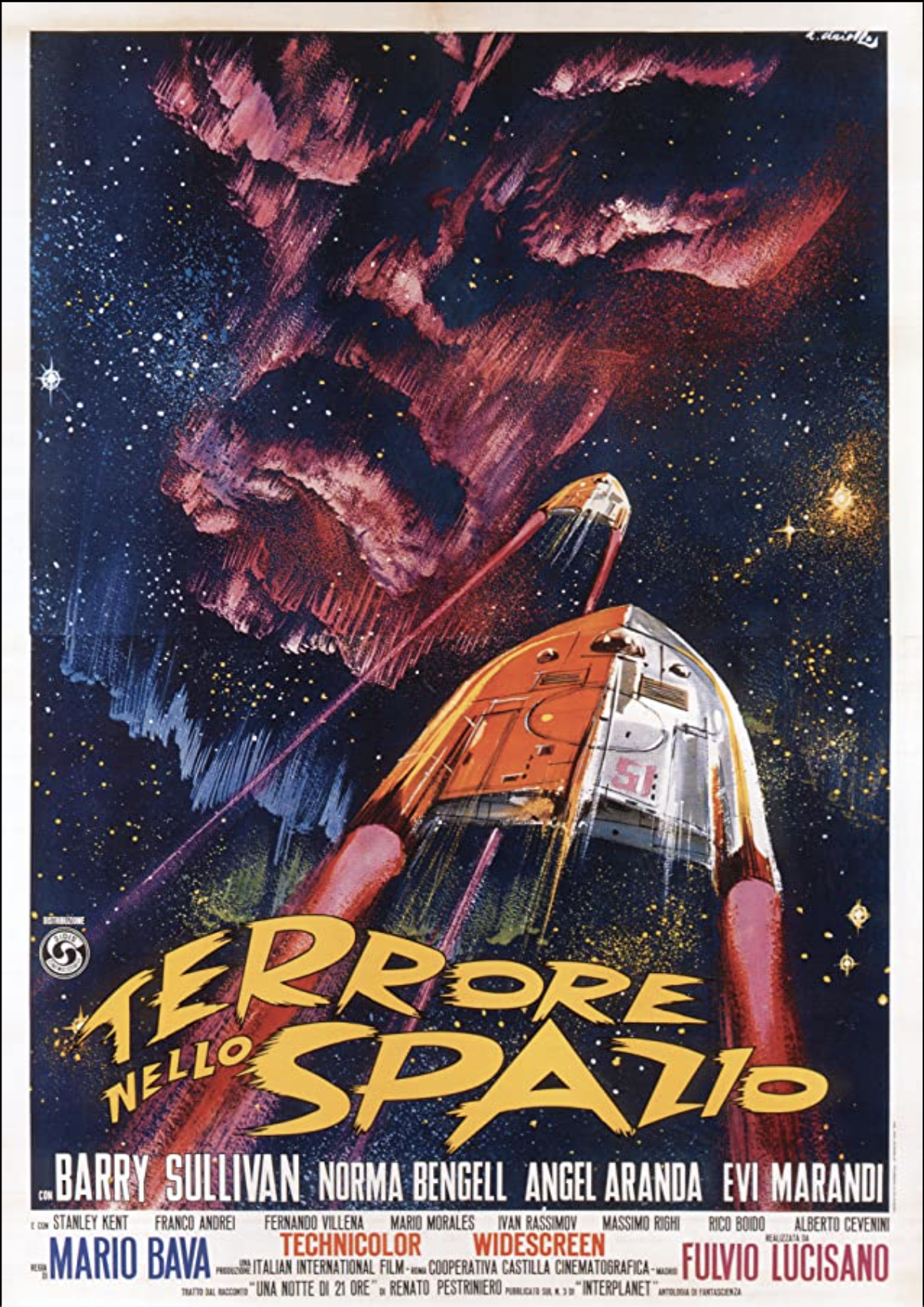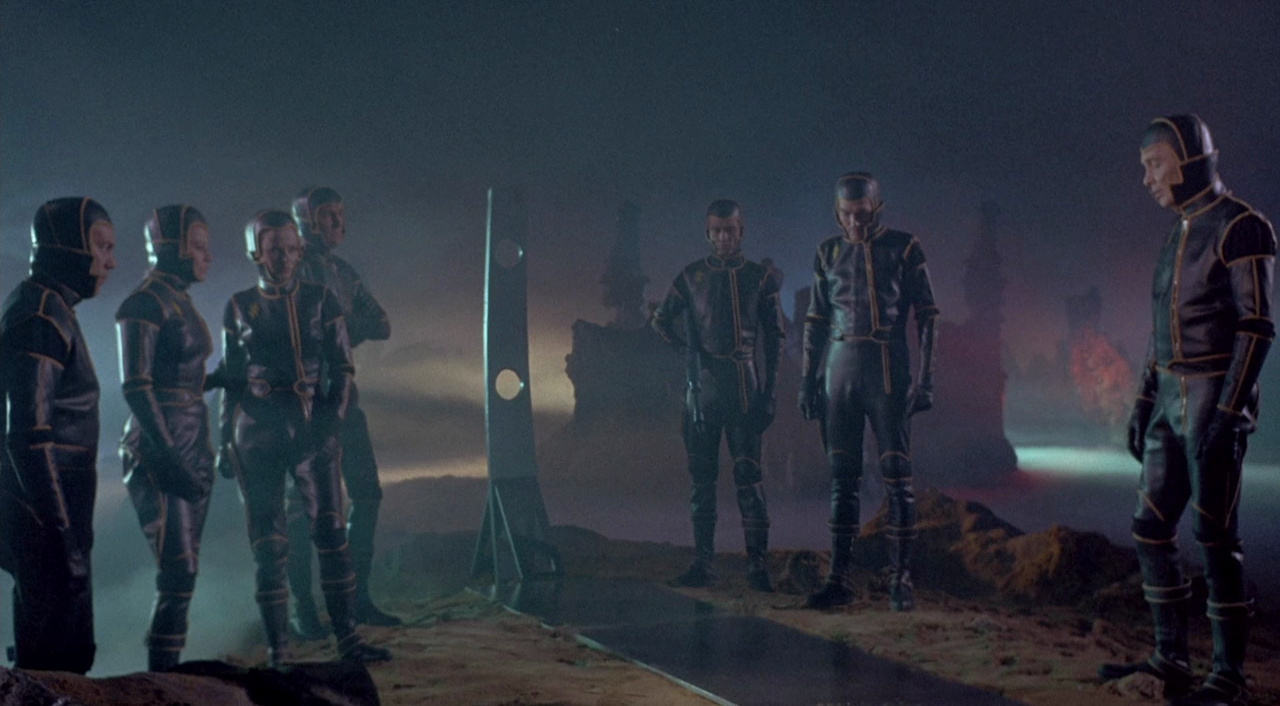"The Furniture," by Daniel Walber. (Click on the images for magnified detail)
 Last week’s column was about Dr. Zhivago, the obvious first choice for any 1965 celebration of production design. But where do we go for Part 2? None of the other 9 nominees really leap forward as worth a column, though I do like King Rat. Outside Oscar’s purview, meanwhile, there’s a lot. There are sweeping historical dramas, like The Saragossa Manuscript and Forest of the Hanged. There are wildly bizarre fantasies, like Juliet of the Spirits and Shadows of Forgotten Ancestors. But I think it would be fun to follow Dr. Zhivago with something entirely different, a movie with only a handful of sets and a budget of $200,000.
Last week’s column was about Dr. Zhivago, the obvious first choice for any 1965 celebration of production design. But where do we go for Part 2? None of the other 9 nominees really leap forward as worth a column, though I do like King Rat. Outside Oscar’s purview, meanwhile, there’s a lot. There are sweeping historical dramas, like The Saragossa Manuscript and Forest of the Hanged. There are wildly bizarre fantasies, like Juliet of the Spirits and Shadows of Forgotten Ancestors. But I think it would be fun to follow Dr. Zhivago with something entirely different, a movie with only a handful of sets and a budget of $200,000.
Mario Bava’s Planet of the Vampires was perhaps never destined to be a hit. Bava was disappointed with the casting of Barry Sullivan as Captain Mark Markary, who he considered far too old. Sullivan, for his part, took one look at the script and assumed the worst. It wasn’t until he showed up for ADR recording that he saw just how much magic Bava could get out of $200,000. The images took his breath away...
Bava and set designer Giorgio Giovannini (who also worked with Fellini) created an immersive cinematic atmosphere with, essentially, fake rocks and dry ice. And they made little attempt to disguise the simplicity of the sets. Below, a crew member has called into the control center over video chat. Rather than superimposing him onto a screen with optical effects, Bava just put him behind a glass window.
Bava was more interested in unity of design than the “realism” that 1960s special effect breakthroughs would make more feasible for science fiction. His approach was about color, smoke and perfectly designed objects, rather than state-of-the-art effects. For example, a number of beautiful shots were composed via the “Schüfftan process,” a technique refined by cinematographer Eugen Schüfftan way back in the 1920s.
Planet of the Vampires is the story of the Argos and the Galliott, two spaceships that respond to a distress signal on an unknown planet. As they descend, a mysterious force causes the crew to fall into a violent trance, which they only barely snap out of. The crew of the Argos then wander the misty surface to find their fellow ship. It does not end well.
The smoke, according to Bava expert Tim Lucas, was produced by dry ice and church incense, among other things. Many of the rocks are columns that rise up from the mist, suggesting native lifeforms that never actually appear.
The boiling lava below, incredibly, was made of polenta.
They do eventually find the Galliott, but they’re too late. The crew is dead. Wires have been torn out of machines. The ship’s controls bleed, a prop that further removes us from any familiar, ordered universe.
The Argos crew bury their fallen comrades outside in the misty wastes. They erect three tall headstones, metallic punctuation marks that resemble nothing recognizable from our earth. Are these astronauts from our Earth? We know very little about them, as Giovannini’s set design slowly reveals.
The crew eventually comes across another abandoned ship, evidence that they’re not the first to be lured by this mysterious planet. They seem like space mice under its hulking frame, a dusty relic of interstellar travel with the suggestion of a face.
Just outside the hatch is the skeleton of one of this ship’s unfortunate crewmembers, a giant with an apelike skull.
The dimensions of the ship are accordingly enormous, dwarfing the Argos crew.
Were it not so ominous, it might have a funhouse vibe. But it’s hard not to feel dread as Captain and Sonya (Norma Bengell) slowly move further and further down the tunnel.
The control center of the ship is full of cobwebs and strange devices, smooth machines with the color and luster of a Jell-o mold.
Another skeleton, perhaps their captain, has collapsed on a table. The purple light falls on the skull, though its expression is hard to identify. However they died, it does not appear to have been peaceful or pleasant.
Lucas observes that this is quite a rare moment in sci fi movies up to this point: an alien species portrayed in a sympathetic light. Bava invites us to imagine how their fate might have mimicked that of the Argos, how they succumbed to the same unseen evil. These haunting mega-skeletons are different enough to captivate the eye, yet similar enough to provoke empathy. It’s a sweet-spot of science fiction imagery that Star Trek would seize upon just a year later, beginning a decades-long exploration of the boundaries of empathy.
The legacy of Planet of the Vampires is an elusive one. Its immediate impact was softened by its failure at the box office. Its influence on Alien is still unacknowledged by Ridley Scott. But the way that Bava and Giovannini use design as another psychological tool is remarkable, and should be remembered as viscerally as any other visual achievement of the mid-1960s.













